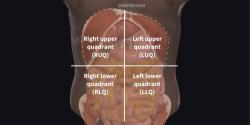What do Rales sound like in lungs?
Rales, also known as crackles, are abnormal lung sounds that can be heard during auscultation (listening with a stethoscope) of the lungs. These sounds are associated with various respiratory conditions and may indicate the presence of fluid or inflammation in the airways or alveoli (small air sacs) of the lungs. Rales are typically described based on their characteristics:
Moist Crackles:
- Description: Moist or wet crackles are often likened to the sound of bubbles popping or Velcro being pulled apart.
- Cause: These crackles are usually associated with the movement of fluid in the small airways or alveoli. Conditions such as pulmonary edema, pneumonia, or bronchiectasis may lead to moist crackles.
Fine Crackles:
- Description: Fine crackles are high-pitched, short, and intermittent sounds.
- Cause: They are often associated with conditions like pulmonary fibrosis or early stages of interstitial lung disease. The sound is produced by the opening of small airways that have collapsed or are filled with fluid.
Coarse Crackles:
- Description: Coarse crackles are lower-pitched, longer, and more continuous sounds.
- Cause: These crackles may be heard in conditions such as chronic bronchitis or conditions where there is excessive mucus production in the airways.
It's important to note that the specific characteristics of rales can vary depending on the underlying cause and the individual patient. The presence of crackles during lung auscultation often prompts further investigation, which may include imaging studies like chest X-rays or CT scans, to determine the underlying respiratory condition.
If someone is experiencing respiratory symptoms or if rales are suspected, it is recommended to consult a healthcare professional for a comprehensive evaluation and appropriate diagnosis. These abnormal lung sounds can be important indicators of respiratory health and may require further medical attention.
Rales
Rales are discontinuous, interrupted sounds heard during inhalation through a stethoscope. They can be described in various ways:
- Fine vs. Coarse: Fine rales are high-pitched, short, and sound like hair crackling between your fingers. Coarse rales are lower-pitched, longer, and resemble bubbling or snoring.
- Moist vs. Dry: Moist rales sound wet and bubbling, indicating the presence of fluid or secretions in the airways. Dry rales are less common and have a rustling or papery quality.
- Distribution: Rales can be heard in specific areas of the lungs or spread throughout. This can help pinpoint the underlying cause.
Significance
The presence of rales indicates abnormal lung function. However, they don't necessarily mean a serious condition. They can be caused by various factors, including:
- Fluid accumulation: Fluid in the air sacs (alveoli) due to pneumonia, heart failure, or pulmonary edema can create rales.
- Mucus buildup: Thick mucus in the airways, as seen in bronchitis or asthma, can produce crackles.
- Inflammation: Swollen airways due to infections or allergies can cause rales.
Associated Conditions
While rales alone are not diagnostic, they are commonly associated with several respiratory conditions, such as:
- Pneumonia: Bacterial or viral infection of the lung tissue often presents with fine, moist rales.
- Bronchitis: Inflammation of the airways can cause both fine and coarse rales, often accompanied by coughing and wheezing.
- Pulmonary edema: Fluid buildup in the lungs due to heart failure or other causes can produce characteristic fine, crackling rales.
- Congestive heart failure: Weak heart function can lead to fluid accumulation in the lungs and result in rales.
- Interstitial lung disease: Scarring or inflammation in the lung tissue can cause dry crackles.
Diagnosis
Rales are primarily diagnosed by a healthcare professional during a physical examination using a stethoscope. However, further tests may be needed to determine the underlying cause, such as:
- Chest X-ray: Provides an image of the lungs to visualize fluid, inflammation, or other abnormalities.
- CT scan: More detailed image of the lungs and airways.
- Pulmonary function tests: Measure lung function and capacity.
- Sputum test: Analysis of mucus coughed up from the lungs to identify infection or inflammation.
Conclusion
Rales are a common finding in many respiratory conditions. They are not always a sign of a serious problem, but it is important to see a healthcare professional if you hear them.













